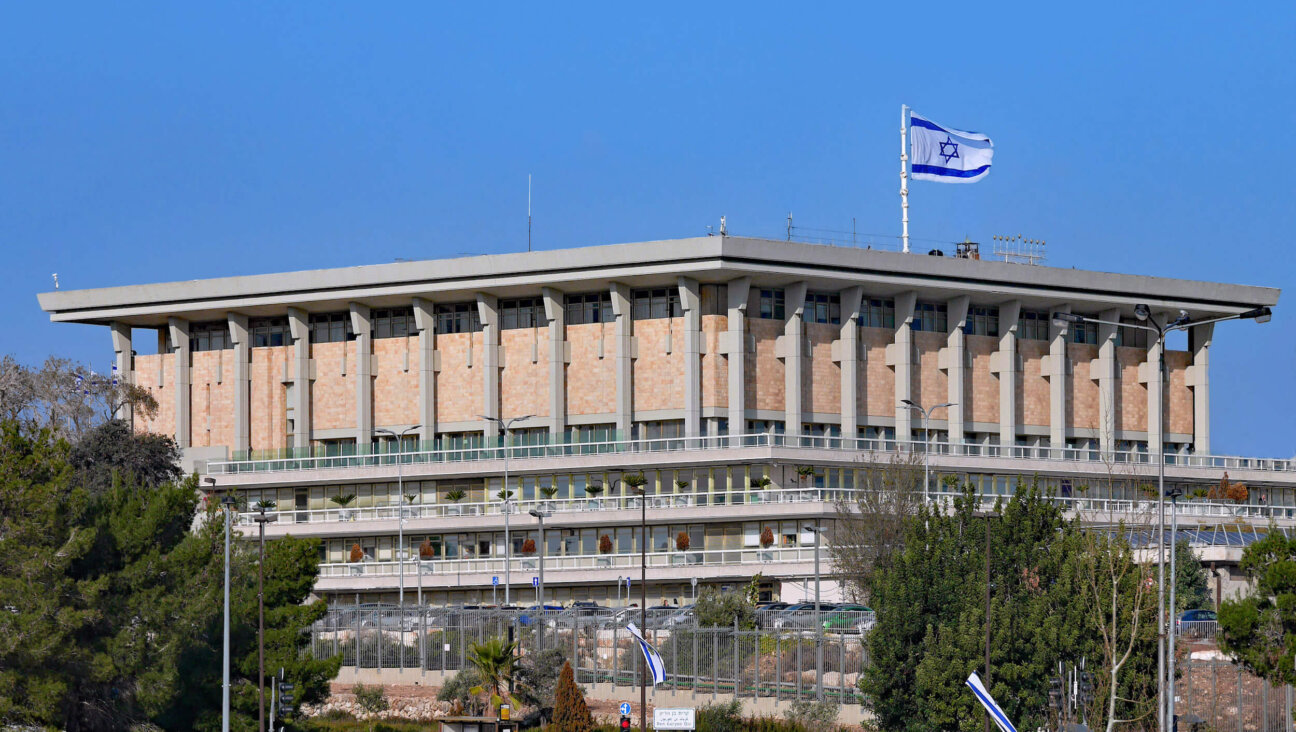That Time Yehuda Glick Was My Tour Guide

Graphic by Angelie Zaslavsky
Rabbi Yehuda Glick / Tumblr
The first time I met Rabbi Yehuda Glick, I thought he seemed completely normal. I never would have thought to call him a right-wing extremist, as many reports are doing nowadays. And I certainly never would have dreamed that a few years later he would be the target of an assassination attempt as a result of his efforts to win Jews access to the Temple Mount.
I was a teenager visiting the Temple Institute in Israel for the first time. Since I had just learned about the Institute in my Modern Orthodox day school in South Florida, I suggested to my family that we go visit it. On that chilly Jerusalem morning I remember feeling the tension between being interested in the subject matter and simultaneously having to act “cool” — for whom I’m still not sure. Though my appearance during the tour was perhaps aloof and disinterested, on the inside I was plotzing.
At that point, I didn’t know about the controversy surrounding the Temple Mount. I did not know, for example, that even calling it the Temple Mount and not Haram al-Sharif was politically charged. I did not know that there would one day be a member of the Israeli Knesset, Moshe Feiglin, advocating for Israel to “expel the Moslem wakf from the Temple Mount.” I just wanted to see the actual Temple vessels that I had learned about in my Bible class.
The Temple Institute was founded in 1987 to prepare for the arrival of the Messiah. Among their other projects, the Institute focused on recreating the Temple vessels — after all, when the Messiah comes and the Temple is rebuilt, the priests will need vessels with which to perform ritual acts, right? The Institute’s team of rabbis and scholars scrupulously researched the measurements and materials needed to recreate the vessels used in the Temple and raised funds to replicate them. I found myself struck by their earnestness.
Glick led us on a guided tour, his unforgettable flaming red hair and professorly glasses leading the way. He was highly active in the Temple Institute at the time. (Since his departure in 2009, he has been running the Temple Mount Heritage Foundation, which advocates for, among other things, reopening the Temple Mount to Jews and Jewish prayer, currently forbidden.)
I vividly recall Glick describing the process of making the Temple’s vessels as described in Leviticus. After seeing replicas of the trumpets that the Levites played in the Temple, we saw the crown jewel of the exhibit: the Menorah. The Menorah, Glick said, was made after nearly a decade of research and fundraising. Built of solid gold, it costs around 3 million dollars and weighs half a ton. The way he described the construction of the Menorah as strictly based off of Jewish law and tradition made clear that for him, and for the Institute, this was a labor of love.
After the tour of the vessels, visitors were given the option to sign up for a guided tour of the Temple Mount. My parents and I did not sign up. Though the Israeli chief rabbinate in 1967 warned Jews not to ascend the Mount, there is currently a growing movement of religious Zionists who encourage visits, and Glick is one of them. But we didn’t decline for these political reasons; instead, it was our interpretation of Jewish law that barred us from making the trip.
We went home and left it at that. But the image of Glick stayed with me. Back then, I saw him as a man who was passionate about Jewish tradition and Jewish history, and, in his own way, the Jewish future. I’m not sure if he changed, or I did, or both — but nowadays I see things differently.
The idea of Jews ascending the Temple Mount at the possible expense of Muslims now strikes me as problematic. Going back to the Temple of old, complete with animal sacrifices, seems archaic — not to mention liable to increase Jewish-Muslim tensions in a land we both love. The fact that someone tried to kill Glick this week is an example of these tensions boiling over once again. And today, for the first time in 14 years, both Jews and Muslims were denied entry to the holy site. Is it worth it?
















